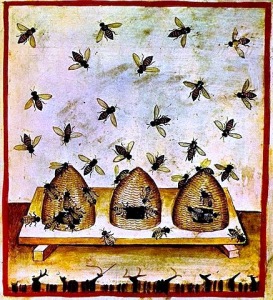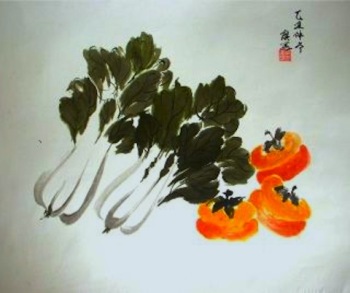Bee is for Ballare
October 17, 2014
“Everything in the Universe has rhythm. Everything dances.”
~ Maya Angelou
Most people know that honey bees pollinate plants and crops, build houses out of wax and produce honey. But did you know that honey bees communicate to each other by dancing?
Honey bee colonies typically contain one queen bee (a fertile female), thousands of worker bees (non-fertile females) and several hundred drones (male bees, present during the spring and summer months).
The worker bees are named appropriately, as they do virtually all of the work: cleaning the hive, feeding the kids, caring for the queen, building honeycombs, guarding the entrance, cooling and ventilating the hive, and foraging for nectar, pollen, water and propolis (plant sap).
After returning from a successful forage, the workers communicate to each other about what they found by performing a dance, known in bee research language as the “waggle dance”. The waggle is a figure-eight style movement that describes the quality and location of good foraging sites.
This form of interpretive bee dancing also comes in handy when a swarm is in need of a new place to live. When the time comes to choose a site for a new home, scouting workers fly out in search of the best locations. When the scouts return, each group makes its case for its favorite site to the other worker bees by dancing. Part of this process involves some bees delivering head butts to those bees dancing in support of a site they don’t like. When a dancer receives enough head butts, she stops, thereby decreasing the support for that particular site. Eventually, only one site has dancers remaining, and that location becomes the new home.
Now scientists are using bee dances to learn which types of land management are most effective at improving habitats for bees and other wildlife. In a study published this last spring in the journal Current Biology, researchers found that bees were more likely to dance for land sites that had been targeted for intense efforts at environmental restoration, rather than sites with less stringent environmental regulation or sites that had received low-level restoration efforts. The bees also preferred the sites that had not been mowed, those where weeds were allowed to grow.
Over the course of two years, the researchers observed and videotaped the bees through special hives that had been built against a glass window in the laboratory. The angles and movements of each dance were measured, as were the travel habits of the bees. Observing the bee dances was found to be more effective at accurately informing environmental policy than satellite surveys and other remote methods of observation.
So, the next time you watch West Side Story, remember that neither the Sharks nor the Jets can claim victory. When it comes to a dance-off, the bees have it.
~~~~~~~~~
My friend Bonnie shared some baby bok choy with me. Baby Bok Choy with Big Noodles in Broth was the tasty result.
Baby Bok Choy with Big Noodles in Broth
Baby bok choy combines with store-bought broth, cooked udon noodles and eggs to make a delicious and simple meat-free meal. Prepared, packaged udon noodles can be found in the refrigerated section of your grocery store. I used Annie Chun’s Organic Japanese-Style Udon Noodles. You can also find dried udon noodles in the Asian section of your grocery store. Prepare according to package directions.
4 to 5 bunches of baby bok choy
3 tablespoons olive oil
2 cloves of garlic, minced
2 tablespoons organic soy sauce
2 eggs
2 cups chicken broth, vegetable broth or miso broth
12 oz (340g) cooked udon noodles
(if using Annie’s, that’s 2 individual packs)
Freshly-ground black pepper, to taste
Thoroughly wash baby bok choy. Cut tops and set aside. Chop stems into 1-inch chunks.
In a non-stick skillet or frying pan over medium-high heat, add oil. When oil is hot, add stems and stir about 2 or 3 minutes or until translucent. Add tops and stir 2 minutes or until tops are wilted. Add garlic and soy sauce and push bok choy to edges of pan.
Break eggs into center of pan and stir to scramble.
Add broth. Bring just to a boil, add noodles and reduce heat. Stir with a fork until noodles are just heated through. Add pepper to taste. Serve hot.
Serves 2


Recent Comments